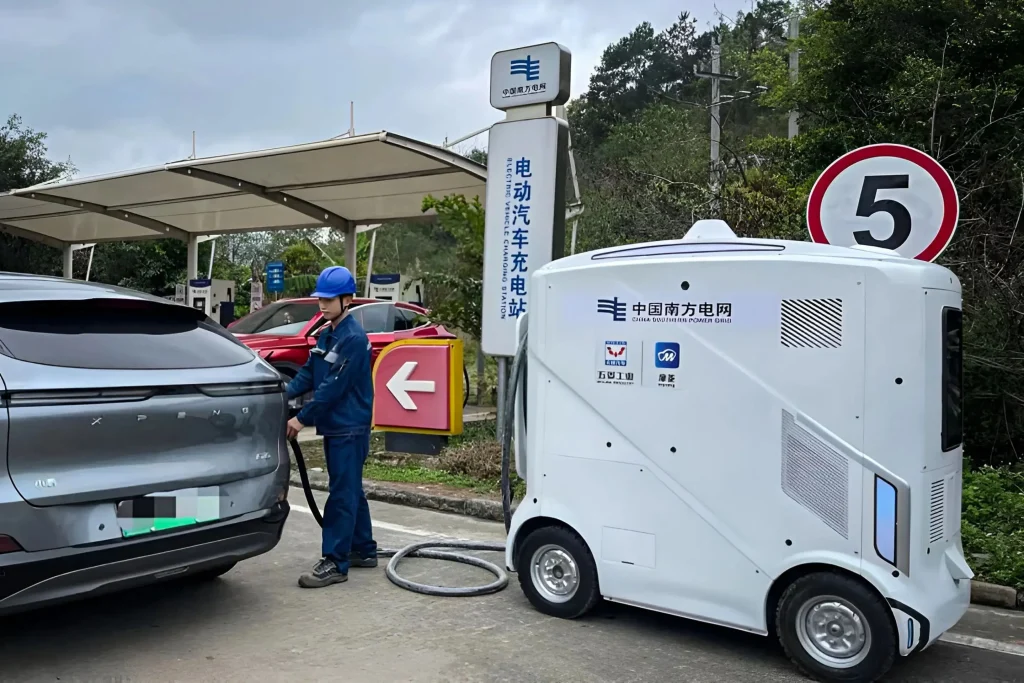China’s EV Push in 2025 and Its Global Trade Implications

Introduction
China’s electric vehicle (EV) sector continues to accelerate in 2025, supported by domestic demand, technological innovation, and strategic government policies. Beyond the domestic market, Chinese EV manufacturers, including BYD, NIO, and XPeng, are increasingly targeting international markets, particularly Europe and Southeast Asia. This expansion has significant implications for global trade, supply chains, and industrial competitiveness.
Government Support and Policy Framework
The Chinese government provides a combination of subsidies, tax incentives, and infrastructure investment to promote EV production and adoption. Key measures include:
- Financial incentives for EV R&D and battery innovation.
- Investment in national charging networks and battery recycling systems.
- Export support programs and trade facilitation for global market expansion.
These policies encourage manufacturers to scale rapidly, integrate AI into vehicle operations, and develop advanced battery technologies, enhancing both domestic production and global competitiveness.
Technological Innovation and Competitive Advantage
Chinese EV companies leverage technology to gain a competitive edge:
- Battery Technology: BYD’s Blade Battery and NIO’s proprietary lithium iron phosphate batteries offer improved energy density, safety, and longevity.
- AI Integration: Autonomous driving features, predictive maintenance, and smart in-car systems enhance user experience.
- Manufacturing Efficiency: AI-driven smart factories optimize production lines and reduce costs, enabling competitive pricing in global markets.
Market Performance and Export Growth
In 2025, Chinese EV exports to Europe increased by approximately 30 percent year-on-year. Southeast Asian markets are experiencing similar growth, with local distribution networks expanding rapidly. Domestically, EV sales reached record levels, driven by government incentives and increasing consumer preference for environmentally friendly vehicles.

Supply Chain Dynamics
China’s EV push has transformed global supply chains. Key raw materials such as lithium, cobalt, and rare earth metals are sourced strategically to ensure production stability. Domestic battery manufacturing, combined with AI-optimized logistics, enables efficient scaling and faster delivery to international markets.
Strategic Partnerships and Trade Alliances
Chinese EV manufacturers collaborate with local partners in target markets for distribution, assembly, and after-sales services. These partnerships facilitate compliance with regional regulations, improve consumer trust, and accelerate adoption of EV technology. Cross-border supply chain integration also enhances resilience against global disruptions.
Global Trade Implications
The expansion of Chinese EVs affects trade patterns, manufacturing competitiveness, and automotive industry standards:
- Market Share Shifts: Chinese EVs compete directly with European and Japanese automakers, influencing pricing, technology adoption, and market strategies.
- Standardization: China’s battery and AI technology influence regional and global standards for EV performance, safety, and interoperability.
- Trade Balance: Increased EV exports contribute to China’s trade surplus, while global competitors adjust production and pricing strategies to maintain competitiveness.
Challenges and Limitations
Despite rapid growth, challenges persist:
- Regulatory Compliance: Meeting international safety, emissions, and quality standards requires ongoing adaptation.
- Competition: Established European automakers are investing heavily in EV technology, creating a competitive landscape.
- Raw Material Constraints: Global demand for lithium, cobalt, and rare earths may impact production costs and scalability.
Consumer Adoption Trends
International consumers are increasingly receptive to Chinese EVs due to competitive pricing, advanced technology, and environmental incentives. AI features, autonomous driving capabilities, and longer battery life appeal to tech-savvy and environmentally conscious buyers.
Economic and Industrial Implications
China’s EV push strengthens its domestic industrial ecosystem while influencing global manufacturing patterns. Investments in battery production, AI integration, and smart manufacturing support job creation, technological advancement, and industrial modernization domestically. Globally, Chinese EV expansion encourages international collaboration, technology transfer, and competitive innovation.
Integration with Digital Finance and Modular Models
Programmable finance and modular digital payment frameworks are increasingly applied in cross-border EV trade. These systems enable automated settlement of international transactions, financing of EV imports, and investment in infrastructure such as charging networks. Integration with AI platforms ensures efficiency, transparency, and scalability for global operations.
Outlook 2030
By 2030, China is projected to maintain a dominant position in the global EV market. Exports to Europe, Southeast Asia, and emerging markets will grow, supported by technological innovation, AI integration, and modular finance frameworks. Domestic production capacity will expand, ensuring supply chain resilience and global competitiveness. Strategic partnerships, smart infrastructure, and sustainable battery technology will underpin continued growth.
Conclusion
China’s EV push in 2025 demonstrates the country’s ambition to lead the global automotive sector through innovation, technology integration, and strategic trade expansion. By combining government support, advanced manufacturing, AI-enabled systems, and modular finance models, Chinese EV manufacturers are reshaping global trade dynamics, enhancing competitiveness, and driving sustainable mobility. The expansion underscores China’s capacity to influence international markets and set technological standards while fostering domestic economic growth.






